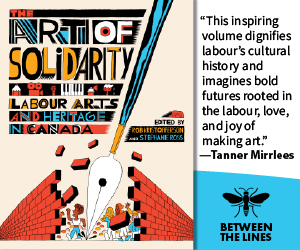When good people do bad things to good people
It seems the only thing that is required for us to do harm to our neighbours is the permission of authority. And the only thing we need to do it again is silence.
The sociological evidence for this is the famous 1974 experiment by Stanley Milgram in which subjects were told by an authority figure to deliver shocks to an actor strapped to a chair whenever the actor came up with the wrong answers to certain questions. The circumstances of the situation were controlled and the shocks were faked, but the subjects didn’t know that.
All it took was the authority telling the subjects, in a neutral voice, to deliver the shock. Most of the subjects (both men and women in a 2006 replication of the experiment) did as they were told even when the actor pretended pain and begged for the punishment to cease.
However, when another “dissenting authority” told subjects to stop shocking the actor strapped to the chair, they stopped immediately. When the dissenting authority was not present, most people continued shocking the actor all the way to the highest mark on the dial, 450 volts.
Of course the more Machiavellian among us have known this recipe for millennia. First control the circumstances (usually by scaring the pants off people). Then re-define your target group (usually by associating them with the threat). Throw in a dash of collateral damage, stir and, in the absence of a dissenting authority, invite good people to do bad things to other good people.
This recipe was used effectively for years against those troublesome protestors, the suffragettes. In 1914 a bomb exploded in Westminster Cathedral blowing the back off the Coronation Chair. The authorities blamed the suffragettes on no more evidence than the handbag that held the bomb. Clearly women weren’t ready for the vote if they were going to do that sort of thing and if it was given to them, anarchy would surely follow.
It was used by Senator Joe McCarthy to great effect when he tried to rid America of communists in the 1950s. In Canada it was used to deal with the general strike in Quebec in 1972. It was used in the summer of 1995 when, as the Ipperwash Inquiry Report points out, police and political authority fostered a climate of fear and hate which essentially gave permission to the deadly force that killed Native demonstrator Dudley George.
It is being used by Richard Fadden the Director of the CSIS who made a McCarthyesque “I have a list” speech to the Royal Canadian Military Institute a few months ago. Fadden claimed that certain municipal politicians and Provincial Cabinet Ministers (insert here: of Asian decent) were under the influence of “foreign powers” (insert here: China). He still hasn’t named the politicians he said were “acting against Canada’s best interests” but the harm has already been done. He has managed to scare some Canadians and smear a whole bunch of others without offering a shred of evidence.
Most recently this scare-smear-and-harm strategy was deployed during the G20 weekend in Toronto. First the folks in charge of summit security frightened everybody with a big fence, a massive build-up of police force and tales of chaos from other summit cities. One billion dollars was not too much to protect the world’s leaders and Canada’s largest city from the vandals who would be coming to sack the summit.
Let’s assume that the 20,000 police and the 10,000 demonstrators on the streets of Toronto June 26 and 27 are all good people. It’s a reasonable assumption. This is Toronto the Good after all and they are all Canadians, and neighbours too, at least for a couple of days.
However, when it became apparent that 20,000 police troops couldn’t stop 150 anarchists, the police chiefs and some political leaders spoke to the media. Suddenly crowds of demonstrators became “mobs” that might (or might not) be harbouring “criminals.” And the vandals themselves became a shadowy “criminal conspiracy.” Hmm, as I recall more property was damaged and more police cruisers were burned in Montreal after the last good old hockey game at the Coliseum. Hab fans or criminal conspiracy?
Whatever the truth, permission to do harm to people was given by authority and, from that moment, riot police tactics switched from containing crowds of people who felt they had something to say, to attacking mobs and corralling criminals. Good people began arresting other good people. I was there, at Queen and Spadina, on June 26 about 6:30 pm, when the switch happened.
Spoiler alert: this next bit might upset the “cops are tops” crowd, so if you are a member, you might want to skip this paragraph. All of the personal injuries—the smashed hands, the broken limbs, the concussions recorded by emergency personnel—were the direct result of police action against citizens. All of the violations of citizens’ constitutional rights during the G20, and there were many, were perpetrated by the police. But don’t believe me, spend half an hour with G20 You Tube videos. Here’s a place to start.
In spite of the evidence, Canadians seem to be eating up the stew authorities cooked up from the recipe. In an Ipsos Reid poll taken a couple of days after the trouble in Toronto, about 70% of us said the police “properly balanced appropriate force and restraint.” That’s roughly the same percentage of people in Milgram’s experiments who continued to shock the actor, even after he pretended pain and begged for the shocks to cease.
We like to think we are good people and would not do harm to other good people, but that’s not what Milgram, history and the G20 weekend is telling us. Given the right circumstances all most of us need is permission. But it is the silence of the leaders we elect to protect the rights of our neighbours that allows harm to continue. When that happens, the job of “dissenting authority” falls to the fourth estate, the press. And if the press fails to speak up, the job falls to a fifth estate, and they might not be the peaceful protestors you saw being rounded up in Toronto the Good on June 26th and 27th.
- David McLaren has worked for government, private industry, NGOs and First Nations (he contributed two reports to the Ipperwash Inquiry). He is a writer living on the shores of Georgian Bay at Neyaashiinigmiing, but has been in Toronto for the past year.



